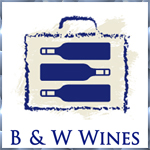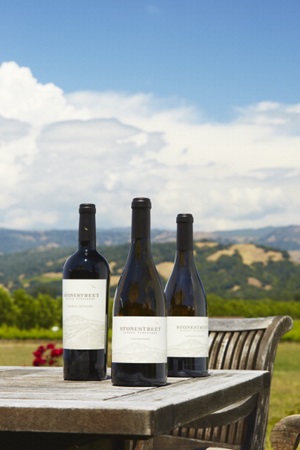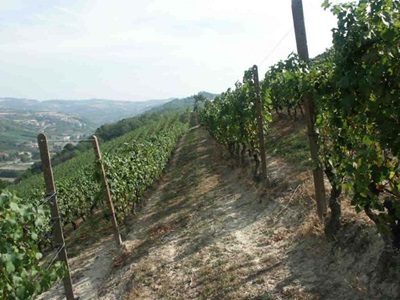5 Big Questions for B & W Wines
Jan. 13, 2017

 In the early 1990s, friends Howard Wasserman and Jordan Bender founded a wine brokerage firm in Ontario to bring the best Australian wines to Canada. Their unlikely endeavour grew into one of Ontario’s premier wine firms, and we at Breakthru Beverage are thrilled to partner with them in the Canadian market. We sat down with the three partners–Jordan Bender, Howard Wasserman and Jim Lisser—to talk about the current state of wine and what they see for the industry in the days ahead.
In the early 1990s, friends Howard Wasserman and Jordan Bender founded a wine brokerage firm in Ontario to bring the best Australian wines to Canada. Their unlikely endeavour grew into one of Ontario’s premier wine firms, and we at Breakthru Beverage are thrilled to partner with them in the Canadian market. We sat down with the three partners–Jordan Bender, Howard Wasserman and Jim Lisser—to talk about the current state of wine and what they see for the industry in the days ahead.
BREAKTHRU: You’re always adding wines to the portfolio. What do you look for in a new wine? What is the process? What do you go through to find the wines?
Howard Wasserman: I’m a little less open-minded than some of the others because I prefer wines that are interesting and delicious. “Delicious” is my opinion, not someone else’s. I think Jordan has an amazing palate and I respect that. But usually I don’t like to get other people’s opinions. I look for interesting, unique products that I do believe will sell.
Jim Lisser: I try to think of the clients who will be drinking this wine and who would like and/or buy the wine. Quality is the number one factor. Once that has been determined, we then ask a number of market questions like: Does the wine over-deliver versus other products, is there a spot on restaurant lists for this wine, how is the relationship with the supplier, can this wine perform year after year in the market place, what is the strategy of the winery and are they focused on quality and the market, does it provide value? Often we like to push the envelope and try something new that is not everywhere else in the marketplace. For example, a number of years ago we brought in a Grenache for restaurants to pour by the glass, a risk given the marketplace had a little knowledge of the versatility of the grape. However, we believe part of our responsibility is to educate the market and now this wine is in a number of restaurants.

Jordan Bender: I would say that process has changed as the business has matured. It grows from a root of passion. But passion doesn’t always work 100% when you’re trying to create a business. I can’t make a business out of selling $100 bottles of wine no matter how great they are. You need to have something you can sell to restaurants that they want to pour by the glass. You want to have something someone wants a case of for Christmas. Your business has to expand and become more generalized. But we still maintain the core quality levels of it. As far as expanding goes there’s a number of ways we can do this. One way would be to go to shows. Also through reviews and reading reviews. We look to see if anybody is representing those wines, especially if it’s something that’s newly developed. We go after it that way. Sometimes it’s just reference and word of mouth. We have a very strong connection still in Australia with the first families of Australian wine. When you go to Australia with Howard it’s like traveling with a celebrity. He knows everybody. They all know him. Every famous winemaker, winery owner, they all know Howard.
HW: I go back to Australia every year. This year we’re planning right now will actually be my 40th trip.
BREAKTHRU: What trends do you see coming up in wine?
JB: I’ve seen there’s been a movement, certainly in Ontario, let’s say 15 years ago. It was a lot of fine dining restaurants, more expensive restaurants, and very lavish tasting menus. Then there was a tone down. In Ontario and Toronto for sure they had these pirate chefs. Just basically a room with sometimes a home stove and they would be cooking these fantastic things. What we saw happening is they would hire people to purchase wines that were more “interesting.” I would say that’s what was happening the last three to four years. Our judgement, on the other hand, is solely based on the quality of the wine and that’s it. We’re not getting something because it is more obscure or esoteric, and without it you’re missing that part of the market. You go to these restaurants and the food would be great but you look at the wine list and you’ve never heard of any of the grapes or these wines before. We never really took part of that.
HW: I think you will see a downturn on orange wine. As the masses start tasting orange wine, I think they’ll say “I don’t want this with my steak, I don’t want this with my barbeque.” I think that will probably slow down. I think you can find indigenous grapes out of Italy having a resurgence. I think you’ll come back to Australia because the alcohol in the wines has been dramatically reduced, not due to the alcoholization, but more due to careful picking, which I think is a really positive thing. I think now in Canada, because the US dollar is so strong, it makes California, Oregon and Washington really hard to play with for the average human. That does worry me on a national scale, because a bottle of wine that was $100 six months ago is now $120. $100 is a lot of money to start with. That is something I think most sommeliers forget.
JL: In Ontario, we have a sophisticated market. We find that Napa Cabernet Sauvignon or an excelent Pinot Noir sells well, but people are eager to try new grape varietals, especially when it comes to white wine. We have seen demand for varietals such as Gruner veltliner and Viognier increase over the past couple of years. Given the strength of the US Dollar versus the Canadian Dollar, we have also seen a rise of French and Italian wines.
BREAKTHRU: Do you think the story behind the bottle of wine is becoming less important than it used to be?
JB: I don’t think so. I think the story is a really important part of it for sure. Especially after having seen a number of wineries. Seeing the way they conduct their business and their winemaking processes it’s amazing. It’s one of the things you really pick up on when you go to these places. I’ve seen places with organic wine and they’re just piling the kegs on top of each other. Then I’ve been to wineries where the kegs are measured a certain distance with a string perfectly aligned in a row with no keg on top because the humidity level is different when you get 2 feet higher above the ground. Or people who are doing wine fermenting in ceramic eggs. Or stainless steel. There’s so many different ways the process, some are so natural. Aggressive irrigation systems. It has impact on the wines for certain. So it’s interesting the story behind it. Some of these people, the winemakers themselves have great character and great stories too.

BREAKTHRU: Jim, you mentioned that you look for a wine that is going to over-deliver versus other products. What do you mean by over-deliver?
JL: I don’t mean it’s for $14 and tastes like it’s $20. I look for a wine that will over-deliver in terms of flavor and taste and create something memorable. I think a wine experience has to be memorable. I think it’s all about creating memories. So for example I just sold a Verdicchio to a holiday event. It’s a non-traditional wine for that type of event, but people will taste Verdicchio, some for the first time, and they will be very surprised by the freshness and the quality of the grape. I know because I’ve sold this to other parties before, and they’re always pleasantly surprised. So, I think about the people drinking the wine and how they’ll feel or how they’ll react once they drink it.
BREAKTHRU: Cork or screwtop? Which do you prefer for wine?
JB: There’s no question a cork offers more in the romanticism. It seems more natural but we can’t argue with the screwtop. It works. There’s no question. It’s tried and true. How they age under screwtop is another thing. It seems just to preserve it and you don’t have any issues.
HW: If it’s an older wine I probably would go cork. If it’s something I’m going to enjoy right now with friends with pizza or at a backyard barbeque then it’s a screwtop.
Read Part One of our conversation with Howard and Jordan here. This interview has been edited for clarity and space.